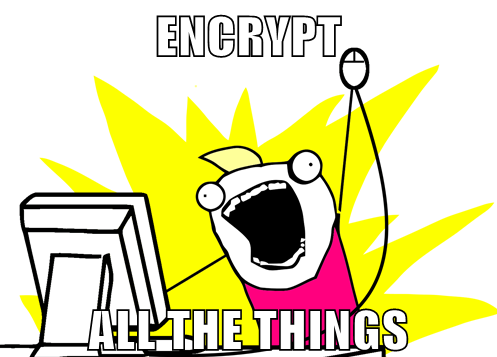This is something I have been meaning to write up for a while: how to automate backups using cron and Drush, a commandline tool for Drupal. Drush makes creating backups of your Drupal website's database and files really easy, and I have written a script that calls Drush to create a backup, and then manages your existing backups so you don't use up too much space on your drive. Once a month, it will also create an encrypted copy of that day's backup file and email it to an external email address. Personally, I think that daily backups from a month ago aren't useful to me any more - if I was going to revert to a backup from that long ago, I'd be looking to restore a weekly backup. Similarly, after several months, I'd only be interested in monthly backups. After creating your daily backup, the script runs through the other files in the backup directory and deletes the files you don't need any more. The script will keep:
- One week of daily backups
- One month of weekly backups (1st, 8th, 15th and 22nd)
- Monthly backups for one year
- Yearly backups for ever
Before I wrote the script, samhobbs.co.uk was a WordPress site hosted on a Raspberry Pi until the drive I was using bricked. I didn't have a recent backup so I lost the lot. Now I make backups to an external hard drive, so that if the SSD in the my Intel NUC gets corrupted I'll be able to recover. The encrypted copies sent to an external email address protect against the server being stolen or lost in a fire.


 Google
Google 

 If you run your own website, email server or other services like OwnCloud at home then you may find yourself in need of a SSL certificate. When you install Apache, it generates a self-signed "snakeoil" certificate that can be used to encrypt your session. However, while this certificate is useful for testing purposes, it falls short in a couple of important ways:
If you run your own website, email server or other services like OwnCloud at home then you may find yourself in need of a SSL certificate. When you install Apache, it generates a self-signed "snakeoil" certificate that can be used to encrypt your session. However, while this certificate is useful for testing purposes, it falls short in a couple of important ways: This is the fourth part of a five part tutorial that will show you how to install a full featured email server on your Raspberry Pi. This tutorial covers how to mark emails as spam with Spamassassin.
This is the fourth part of a five part tutorial that will show you how to install a full featured email server on your Raspberry Pi. This tutorial covers how to mark emails as spam with Spamassassin.